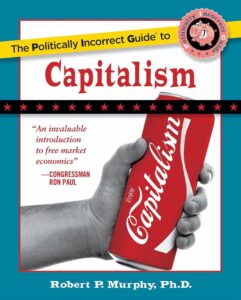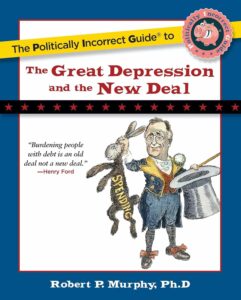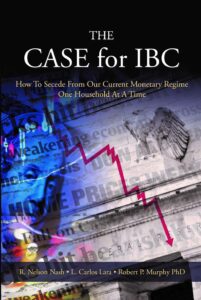More Convenient Data Sampling By Krugman
A reader asked me to investigate this Krugman blog post. Echoing DeLong, Krugman is arguing that the fiscal conservatives are wrong to worry that Obama’s deficits will push up interest rates:
Brad DeLong has been writing about the falsity of the claim that large-scale government borrowing in a liquidity trap will lead to soaring interest rates. I was looking for some corroborating data, and came up with a picture that surprised me, though it shouldn’t have. Here it is:
Net federal saving is, roughly, the budget surplus (so it’s negative if there’s a deficit.) It turns out that there’s a strong correlation between budget deficits and interest rates — namely, when deficits are high, interest rates are low.On reflection, it’s obvious why: a weak economy both drives up deficits and drives down the demand for funds, while a strong economy does the reverse. Thus the surpluses of the late Clinton years were associated with high interest rates, while the current recession has depressed both rates and revenues.
OK now I’m not sure that Krugman of doing this on purpose, but the time frame he chose for his data is very convenient. (On the one hand, I want to give him the benefit of the doubt, because the FGDEF series that he chose only goes back to 1999. On the other hand, I’m not sure how he even found that series on FRED; if you go through the obvious categories, the first series you find is FYFSD, which goes way way back.)
Anyway, regardless of how he ended up with the above graph, it is nonetheless very misleading. As I alluded to in the parentheses above, we can’t use the exact same series to go back further in time, since the one Krugman chose for federal net savings doesn’t go back any more. However, we can switch to the nearly equivalent FYFSD (federal surplus or deficit), and we can see just how robust the apparent relationship above is.
First, let’s switch the series but keep the same time scale, so it’s clear that I’m not rigging the game. So below is the same chart as Krugman has above, except I’ve taken out his FGDEF series and put in the FYFSD series:

Not a perfect match, but close enough, right?
OK great, now let’s go back to 1962, instead of stopping at 1999 as Krugman did in his blog post:

Well how ’bout that. Over the whole period–as far back as the 10-year Treasury rate series goes on FRED–you don’t see the two lines moving in lockstep. If anything, they move in opposite directions. That is, in periods when the government borrows heavily, interest rates tend to go up, and in periods when the government runs a big surplus, interest rates tend to dip down.
Now of course, you could try to explain away the big moves. For example, in the early 1980s Volcker jacked up interest rates, and this pushed the country into a severe recession which then put strains of the federal budget.
OK that’s fine. But clearly, Krugman’s initial surprise was correct. In general, interest rates and federal savings rates do not move in lockstep. Supply and demand work, even when it comes to the government.
One last point: Brad DeLong did not, as far as I can tell, make a general claim about the two series. Rather, DeLong was merely saying that in a liquidity trap you get the abnormal result that government borrowing doesn’t push up interest rates. So DeLong is unscathed by the above.
But we can’t say the same for Krugman. Even though he used DeLong as a springboard, his explanation for his (initially surprising) graph was a general one about recessions and interest rates. He wasn’t limiting the discussion to rare periods of liquidity traps, unless every recession features a liquidity trap.
Has Andrew Sullivan Disavowed Barack Obama, Like He Promised?
Back in late October, I wrote:
In a previous post, I admitted that I now feel quite foolish for being afraid that if Gore won the White House, he would have “wrecked the economy.” (Again, I didn’t vote for Bush, but I was rooting for him against Gore. I rooted for Kerry, though again I didn’t vote for Kerry.) I warned that those who are pro-Obama because he’s the “peace candidate” may have similar feelings, a few years from now.
So as a fun exercise, I would like the pro-Obama people to come up with specific things that would make them admit they are mistaken right now, in their advocacy of Obama. For example, if Obama orders the use of nuclear weapons on Iran, surely that would count, right?
The traffic shot up 732% that day, because the mighty blogger Andrew Sullivan took up my gauntlet, responding to the above by saying:
Er, yes. Jim Henley has made his list. Mine would include almost everything George W. Bush has already done. It couldn’t get any worse, could it? I mean: no liberal Democrat could spend and borrow more than this Republican could he? Pretty close to impossible. And conservatives would go nuts – unlike their shameful indifference for last eight years.
Now I’m not a regular reader of Sullivan, so I can’t tell if his post was 100% pure sarcasm. But if we take it at face value, then Sullivan has to disavow Obama. On the foreign policy and civil liberties stuff, Australian journalist (and socialist) John Pilger pulls no punches in his denunciation of Obama (HT2EPJ).
And on the spending side, it’s not even close. We already know that the deficit this year (FY 2009) will be at least $1.8 trillion, which I’m pretty sure is the biggest in world history, at least in nominal terms. (Here’s a cute story from last July 2008, in which the Democrats were freaking out when the Bush administration predicted that the FY 2009 deficit would be $482 billion. Note, $482 billion << $1.8 trillion.)
Now yes, President Obama is not responsible for the entire $1.8 trillion deficit this budget year, which started back in October 2008. So perhaps a fairer assessment of his deficit hawkishness is the projections of his fiscal plans many years into the future. There are a bunch of different ways to gauge this, but here’s a quick and easy one: From the Summary page (Acrobat page 11) of the March 2009 CBO report [.pdf]:
The cumulative deficit from 2010 to 2019 under the President’s proposals would total $9.3 trillion, compared with a cumulative deficit of $4.4 trillion projected under the current-law assumptions embodied in CBO’s baseline. Debt held by the public would rise, from 41 percent of GDP in 2008 to 57 percent in 2009 and then to 82 percent of GDP by 2019 (compared with 56 percent of GDP in that year under baseline assumptions).
Now wait, hold on, don’t start looking up numbers to figure out the comparable stats for the Bush administration. If Obama is expected to raise the explicit federal debt as share of the economy, from 41 points to 82 points, then that means there must have been no federal debt when George Bush took office, in order for them to be equally profligate. So I don’t think we even need to consult the Statistical Abstract. Clearly Obama is going to add far far more to the debt–even adjusting for the size of the economy–than George Bush did.
Sullivan is definitely right that many conservatives who are freaking out about Obama’s deficits, were strangely silent during the Bush years. I am not one of those hypocrites; I called out Bush’s reckless deficits at the time.
Has Sullivan done the same with Obama? Does he now regret his support for the Senator from Illinois?
Is the BLS Suppressing Producer Price Inflation?
As long-time readers know, I am very skeptical of the big deflation scare. The raw CPI numbers have risen at an annualized rate of 4.2% since December. The “seasonally adjusted” CPI numbers–what the press reports–are up only 2.4% (at an annualized rate) over the same period. Now it’s possible that it will all even out by December, but I have my doubts. (More precisely, I think they will revise the earlier “adjustments” so that the official headline inflation numbers won’t need to be as big in the last half of 2009 in order to reconcile the two series.)
Things are also fishy if we turn to the Producer Price Index (PPI). According to the latest press release, both the raw and the seasonally adjusted PPI fell 0.9 percent from June to July. I’m wondering when the positive seasonal adjustment is going to start kicking in, because here are the NSA and SA numbers for the year:
| Monthly Changes in PPI Index | |||||
| Month | NSA | SA | Difference | ||
| January | +0.9 | +0.8 | -0.1 | ||
| February | -0.1 | +0.1 | +0.2 | ||
| March | -0.7 | -1.2 | -0.5 | ||
| April | +0.6 | +0.3 | -0.3 | ||
| May | +0.5 | +0.2 | -0.3 | ||
| June | +1.9 | +1.8 | -0.1 | ||
| July | -0.9 | -0.9 | 0.0 | ||
| Cumulative | -1.1 |
Unfortunately FRED doesn’t have both the seasonally and non-seasonally adjusted PPI series, so to generate the above table I had to go through the BLS archives of the PPI press releases each month.
Just to make sure you understand the significance of the above table: So far this year, the BLS has underreported the actual changes in the PPI by a cumulative 1.1 percent. (It’s probably not correct to just add those differences up, but you get the idea.) The whole rationale of seasonal adjustment is that price changes in one direction tend to be concentrated in certain months. So if, say, prices typically rise very quickly in the beginning of every calendar year, and then remain flat during the third and fourth quarters, the BLS doesn’t want to shock people by reporting the big jumps in the first quarter. So instead they smooth out the yearly increase, by adjusting the early months down and bumping up the later months. Since there had already been a cumulative 1.1 percent deficit going into this month, that’s why I was surprised to see no bumping up of the July numbers.
While looking through the BLS archives of previous PPI releases, I confirmed another suspicion I had had, regarding this month’s press release. I thought the 0.9 percent drop from June to July seemed excessive, so I wanted to look at the breakdown of the overall index into its categories. For example, I could look at what the BLS said happened to fuel costs, and I could compare that with the EIA’s records of actual gasoline prices.
Now in previous months, this would have been easy. Near the bottom of each press release, you can find Table 1 which has all kinds of information. (Check out July’s press release, for example.)
But even though the press releases from January through July 2009 all have a Table 1 with this non-seasonally adjusted breakdown, for some reason this month’s press release doesn’t have it.
That information is presumably still available somewhere in the bowels of the BLS website, but if it’s difficult to find, it discourages people from looking. Is that the point?
Last issue: I was also puzzled as to why the CPI numbers came out first this month, followed by the PPI. In previous months I thought the PPI always came out a day ahead of the CPI. I called the BLS and the guy there told me that yes, the PPI generally comes out first, but they are independent groups working on these numbers, and for whatever reason the PPI people were delayed this month.
Is It a Curse to Have a Printing Press?
Michael Pettis seems to think so, in this blog post (HT2 Tim Swanson):
…I was recently interviewed for a TV show about – yet again – the awful continuing prospects for the dollar as a the dominant reserve currency. Besides expressing my deepest skepticism that the most recent hullabaloo about the dollar was likely to be more reasonable than during all the previous the-sky-is-falling-on-the-dollar periods, I also said that it seems to me that the argument had somehow gotten backwards as far as its proponents and opponents were lining up.
In my view it is the US who should be agitating for an end to the US dollar as the default reserve currency, because this means that any time a country needs to grow reserves or turbo-charge domestic growth with mercantilist industrial policies, thanks to the flexibility of the US financial system and the foreign desire to accumulate dollars, it is almost always the US tradable goods sector that is forced to adjust. In a similar vein it should be foreigners, especially Asians, and most especially China, that should want to maintain the existing currency system.
Wow, isn’t that ironic? The US government shows the world who’s boss during World War II, and as its hegemony becomes apparent, it pushes through a new worldwide monetary system based on the US dollar. Normally when one country gains global dominance, you’d expect it to change the rules to favor its own interests. But we apparently had either altruists or dopes at the helm in 1944.
Pettis is relying on crude mercantilist and Keynesian notions in his post. Rather than pick apart the fallacies, let me try this approach: Suppose you have two printing presses. One of them cranks out US dollar bills, which are indistinguishable from the real thing. The other cranks out Monopoly money.
According to Pettis, you should prefer the latter machine, because there isn’t much demand for Monopoly cash. In the awful scenario where you were stuck with the machine that cranked out US currency, here’s what could happen: You print up say $400,000 in new currency this year, which other merchants are happy to accept. But if you don’t feel like consuming or investing more than $400,000 this year, you will have to quit your job, because of all the cash piling up in your house. Thus that cursed machine has thrown you out of work! Oh the humanity!
Changing Demographics Will Wreck Social Security and the Stock Market
During a meeting with my co-author Carlos Lara yesterday, he raised a point that is obvious but that I had never considered: As the US population ages, this will exert huge selling pressures on the US stock market. Why? Because 401(k)s and other IRS-created retirement vehicles have a built-in exit point. As Nelson Nash explained in his recent LRC piece:
According to all Tax-Qualified Plans, when one turns 70½ you must begin to take income (taxable) from your plan. That means you have to sell your stocks or mutual fund shares. Pray tell, who will you sell them to? Where are the buyers in the next generation?
Everyone see the problem? If the age cohorts were always uniformly distributed, it wouldn’t matter. As one group hit 70, they’d start taking their mandatory withdrawals from their 401(k)s and other holdings. But at the same time, a fresh group of comparable size would enter the workforce, and they would start socking money away into their own (tax-deferred) retirement accounts.
But that’s not going to happen over the next few decades. As we all know in the context of Social Security’s insolvency, the US age distribution is becoming lopsided toward the elderly, as the Baby Boomers move through the age distribution. The first Boomers were born in 1946. Right now they are 63 years old. That means in seven years a wave of stock selling will ensue, due to the arbitrary tax incentives of government-sponsored retirement plans. But of course, smart investors will anticipate this, and start unloading their shares in six years. But the super-smart investors will anticipate this, and start unloading their shares in five years…
A Robert Lucas would tell us not to worry, that the market has already priced all this information in. I doubt it. To see just how significant the demographic shift will be over time, check out this cool link, where the age distribution morphs on your screen (HT2MR).
Here’s another article making the same point I am here.
Potpourri
* A review of Gene Callahan’s novel, Puck. Incidentally, I read Gene’s book and thought it was cool. But it’s a bit weird. (Basically, my opinion of Gene.)
* A scathing review of Transformers 2. My friend warned me off this (over the phone) when I was standing outside a movie theater during a recent business trip. Judging by the review (which takes the form of a FAQ), I made the right call. (Warning there are some naughty words.)
* I take on Krugman’s critique of high-frequency trading.
* A pretty funny critique of libertarianism (from a libertarian, I think) that involves Monty Python quotes. (HT2 MarginalRevolution) And yes, now that I re-read the sentence I just typed out, I realize why I didn’t date much in college.
The Bogus Deflation Scare
This is amazing; a Bloomberg article explains why we don’t need to fear falling prices! (HT2 Jeff Tucker) I almost wonder if the guy read my book the Depression, because here his analysis is very similar to mine:
In reality, anyone with a sense of economic history would have been aware that the whole deflation story was oversold. In the U.K., the House of Commons Library publishes data on prices going back to 1750. From 1814 to 1914, prices rose a bit in some years, and dropped a bit in others, so there was no real change in the price level over the century.
…
In other words, there were plenty of deflationary years. Yet over that period, the U.K. became the greatest economic power in the world: Its relative decline only started once inflation took hold. Deflation didn’t stop the Industrial Revolution, one of the most sustained times of economic creativity ever seen.Likewise, a 2004 study by the Federal Reserve Bank of Minneapolis looked at the data on deflation across 17 countries over 100 years. It found that although the Great Depression of the 1930s was linked with falling prices, that wasn’t true of any other historical period. There was, it said, “virtually no evidence” that deflation caused a depression.
Why should it? We are constantly told that deflation is bad because it makes consumers hold off from buying things, thinking they will be cheaper tomorrow. But that is just silly.
…
Everyone knows that a computer or an iPod will be both better and cheaper in six months. And people really want one right now. Torn between those two impulses, plenty of shoppers go out and buy computers and music players. It is true in the electronics industry, and, once they get used to falling prices, it will be true for other industries as well.
Nevada Development Campaign Taunts California Legislators
I didn’t realize they were so blatant about it… Anyway the Nevada Development Campaign makes a compelling argument to business owners to relocate out of the Golden State. I’ll be writing an op ed on this in the next few days, which will have the relevant stats (like how many people moved out of California and into neighboring Nevada, and what the difference in after-tax earnings are).








Recent Comments